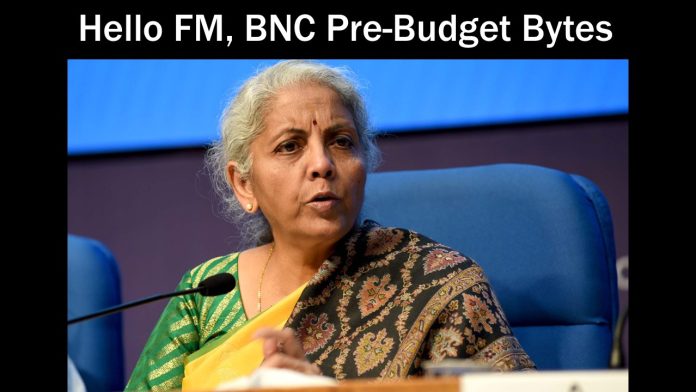Colliers calls for Industry status, infra focus, tax exemption on rental housing
GURUGRAM, Jan 17 (The CONNECT) – Indian real estate is likely to build on the strong momentum which was evident throughout the last year.
The year 2024 marked the third consecutive year of record office leasing at 66.4 million sq. ft. across the six top cities, 14% up YoY. Residential sales as well as industrial & warehousing space take-up were also close to all-time high.
Institutional investments in Indian real estate too touched a remarkable USD 6.5 billion inflows in 2024, marking a substantial 22% increase from the previous year. Supported by the budgetary announcements, all real estate asset classes are expected to perform well in 2025 as well.
“Accordance of ‘industry’ status to real estate has been a longstanding ask, and experts will be keenly monitoring related developments in the upcoming budget. Infrastructure augmentation is likely to remain at the focal point of long-term growth vision. Significant improvement in transit-oriented-development and logistics efficiency is particularly desirable for equitable growth dispersion. Additionally, seamless integration and coordinated efforts from various government & regulatory bodies and private sector will be pivotal in the ongoing transformation of smaller cities and emerging growth centres into sizeable economic corridors of the future.” said Badal Yagnik, Chief Executive Officer, Colliers India.
Residential real estate momentum has been strong for the last few years. Homebuyers and developers expect further impetus from the government in the upcoming budget. Targeted measures can buoy homebuyer sentiment, providing a demand-side boost and simultaneously alleviate pressing developer concerns, providing a supply-side boost. Expectations centre on affordability, policy support, and enhancing access to housing finance.
Demand side
- Separate & higher deduction for housing loan principal repayment (up to INR 500,000), currently capped at INR 150,000 under section 80C. Limit on tax deduction on interest paid can be increased from the current INR 2 lakhs to about INR 4-5 lakhs in case of let-out property.
- Revival of the Credit Linked Subsidy Scheme (CLSS) for first-time homebuyers is widely expected from the budget.
- Reintroduction of tax holidays for affordable housing projects under Section 80IBA can help financially weaker homebuyers to a significant extent. Moreover, standardization and increasing affordable housing thresholds is long due, given that 2017 criteria are yet to be updated and reflect the overall rise in housing prices across major cities of the country.
- Extension of tax benefits for first time homebuyers in applicable affordable housing projects under 80EEA. Current capping of INR 150,000 and loan sanction timeline till March 2022 can be expanded to provide a thrust to housing for the masses.
- Tax exemption on rental income to boost housing demand especially amongst investors.
Supply side
- GST reduction on key construction raw materials such as cement, steel & aluminium, and rationalization of rates for under-construction properties will help in controlling project costs.
- Increased fund allocation for stressed projects through the SWAMIH fund can improve liquidity in stressed residential developments.
- Provision of tax-based incentives, relaxation in development charges and other supportive policy measures can provide a thrust to developers and institutional investors in senior living segment.
Infrastructure impetus:
The government is expected to maintain its strong focus on social, physical, and digital infrastructure creation. Investments in infrastructure and manufacturing capabilities will remain pivotal to sustained economic growth and dispersion of equitable growth centres across the country.
- Prioritization of national highway expansions, development of multi-modal logistics parks & regional airports and improvement of infrastructure related to logistics is expected to continue.
- Through viability gap funding and supportive regulations, the government is expected to incentivize private sector participation and enable scaling up of manufacturing capabilities across the country.
- Upskilling programs in MSMEs and heavy manufacturing as it can provide a boost to employment opportunities in key clusters and nodal cities.
- Rationalization of import-export tariffs as they can expedite India’s integration into global supply chain. GST rationalization for MSMEs in the initial years of establishment can further improve local competitiveness.
- Easier access to credit, financial support, and policies designed to modernize MSME operations through increased digital adoption can percolate down and spur real estate growth in Tier II & III cities of the country
Incentivizing sustainability:
Sustainability adoption can be incentivized in energy generation, transmission, storage and public as well as private transportation. Built environment, especially in housing and manufacturing, must step up significantly in terms of green element adoption.
- Incentivising investment in green bonds and renewable energy business can fast-track realization of national carbon emission and net-zero goals.
- Government directive to automotive players for a certain share of compulsory EV manufacturing can facilitate greater EV adoption across passenger vehicles including 2 wheelers and 4 wheelers.
- Dedicated EV manufacturing corridors can be created along existing auto manufacturing clusters. Public Private Partnerships can fast-track the development of holistic EV infrastructure including charging stations, energy storage & battery swapping facilities and recycling of e-waste along these corridors.
- Tax breaks and GST concessions for green buildings can encourage real estate developers to reduce carbon footprint across segments such as residential, commercial, industrial & warehousing, hospitality, retail, data centers, etc.
“Simplification of tax regimes across individuals & corporates will continue to bring in efficiencies, drive entrepreneurial capital and retail investment across sectors including real estate. Retail investor participation in real estate derivatives such as REITs and SM REITs can be enhanced through introduction of separate tax deductions. Gradual uniformity in treatment of capital gain instruments can spur growth in real estate specific investments. Moreover, reduction of excess compliance and adoption of a single-window clearance mechanism for new businesses can boost institutional investor participation in alternate real estate segments such as data centres, senior living, coliving, life sciences, etc.” said Vimal Nadar, Senior Director, Research, Colliers India.




